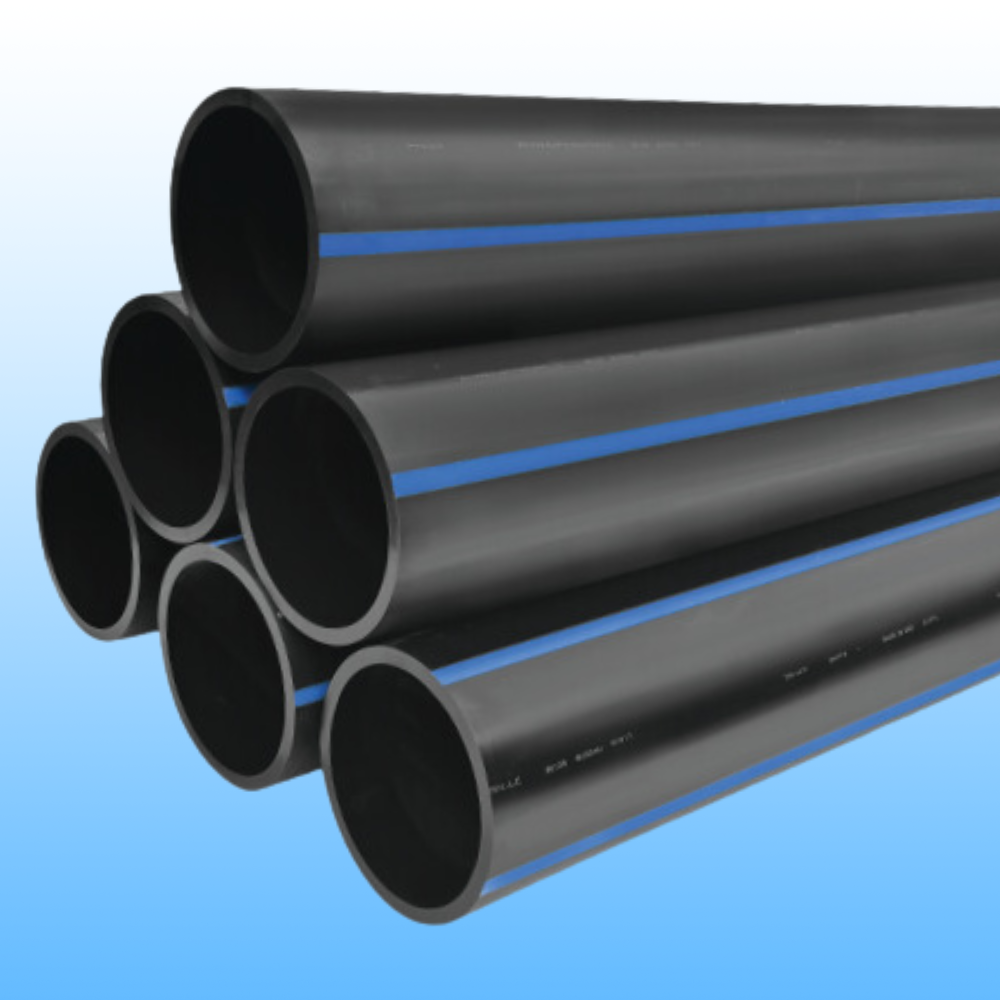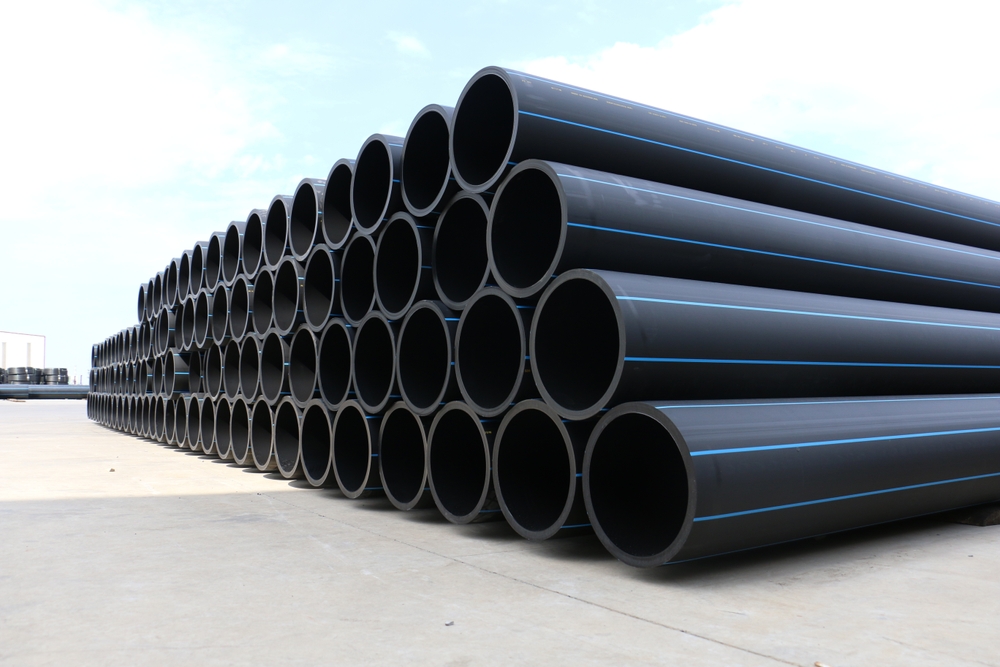Where to Find hdpe pipe in stock Midland TX for Urgent Projects
Check Out the Production Process Behind High-Quality HDPE Pipeline and Its Applications
The manufacturing procedure of top quality HDPE pipes is detailed and methodical. It begins with the selection of raw materials that boost performance. Following this, ethylene undergoes polymerization to develop resin, which is after that shaped through extrusion. Quality assurance is vital, making certain that the final product fulfills stringent criteria. However, the journey of HDPE pipes doesn't end with production. Their applications throughout different markets expose a more comprehensive significance worth taking a look at.
Recognizing HDPE: Residences and Advantages

High-density polyethylene (HDPE) is a functional polycarbonate known for its sturdiness and resistance to different ecological variables. This product exhibits outstanding tensile strength, making it suitable for requiring applications. Its low-density structure adds to a light-weight product, helping with convenience of taking care of and installment. HDPE likewise showcases exceptional resistance to chemicals, which minimizes degradation when subjected to severe substances.
The product's reduced wetness absorption additionally improves its longevity, making it optimal for usage in pipelines and storage containers. Furthermore, HDPE is resistant to ultraviolet (UV) radiation, making sure that products keep their stability also when subjected to sunlight. Furthermore, its flexibility enables for the creation of elaborate forms without endangering strength. The environmentally friendly nature of HDPE, usually stemmed from recycled materials, includes in its allure, advertising lasting practices in production. Overall, these properties and advantages make HDPE a preferred selection for various industrial and consumer applications.
Raw Material Choice for HDPE Manufacturing
The option of basic materials for HDPE production is necessary to confirm the end product satisfies the preferred specifications and high quality criteria. High-density polyethylene (HDPE) is mostly created from polymerized ethylene, originated from fossil fuels such as natural gas or crude oil. The high quality of these feedstocks significantly influences the mechanical and thermal residential properties of the last HDPE.
Additives likewise play a considerable function in enhancing HDPE's performance, consisting of anti-oxidants, UV stabilizers, and colorants, which boost durability and resistance to ecological aspects. The option procedure have to take into consideration not just the chemical make-up of the raw products but likewise their processing qualities to assure efficient production.
In addition, the sourcing of raw products need to prioritize sustainability and conformity with environmental policies, as responsible techniques are imperative in today's market. Ultimately, mindful resources choice lays the structure for producing high-quality HDPE pipes appropriate for diverse applications.
The Extrusion Process: Forming HDPE Pipe
The extrusion process plays a vital role in forming HDPE pipes, starting with meticulous material preparation strategies that ensure suitable circulation and consistency. Just as important is the style of the die, which straight influences the last dimensions and surface quality of the pipeline. Together, these variables add significantly to the performance and high quality of HDPE pipe production.
Product Preparation Methods
Effective production of HDPE pipes begins with careful material prep work techniques, specifically the extrusion process. During this phase, high-density polyethylene resin is very first dried to get rid of wetness, guaranteeing excellent circulation qualities. The resin is then fed into the extruder, where it goes through home heating and melting, changing into a thick state. This home heating procedure is very carefully managed to keep the material's integrity and performance. The molten HDPE is compelled through a die, forming it into a continuous pipeline form. Proper temperature level management during extrusion is essential, as it directly influences the material's buildings and the end product high quality. Once formed, the HDPE pipe is cooled down and cut to specified sizes, all set for succeeding handling and applications.
Die Style Significance
Accuracy in die layout plays a necessary role in the extrusion process of HDPE pipelines. The die acts as the last shaping tool, straight affecting the pipeline's dimensions, wall thickness, and surface area coating. A properly designed die guarantees uniform product circulation, decreasing defects such as abnormalities and weak places. The geometry of the die should be enhanced to accommodate the particular properties of HDPE, including its viscosity and thermal habits during extrusion. Additionally, the cooling rate of the material as it passes with the die can noticeably affect the pipe's structural stability. As a result, buying innovative die technology is vital for suppliers intending to generate premium HDPE pipes that meet market requirements and consumer assumptions.
Quality Control Procedures in HDPE Manufacturing
Numerous variables Related Site affect the high quality of HDPE pipe manufacturing, reliable top quality control procedures are essential to ensure consistency and dependability in the last product (Pipe Supplier American Plastics Midland). Trick quality assurance techniques consist of rigorous material evaluation, validating that the raw polyethylene meets well established requirements for pureness and thickness. Throughout the extrusion procedure, parameters such as temperature, pressure, and cooling time are carefully monitored to maintain dimensional precision and structural honesty
Furthermore, post-production testing is essential; makers often perform hydrostatic tests to evaluate the pipe's toughness and resistance to stress. Aesthetic examinations for surface area problems even more enhance quality control. Accreditation from relevant standards companies, like ASTM or ISO, offers an extra layer of integrity. By carrying out these extensive top quality control steps, manufacturers can decrease problems, boost performance, and ensure that the HDPE pipelines fulfill the certain requirements of numerous applications, inevitably causing customer fulfillment and rely on the product.
Applications of HDPE Pipeline Across Industries
HDPE pipelines are linked here used across numerous industries as a result of their sturdiness and versatility. In water circulation systems, they guarantee reliable shipment, while in wastewater management, they supply reputable solutions for waste transportation. Furthermore, farming irrigation networks take advantage of HDPE's resistance to corrosion and adaptability, making it a suitable choice for contemporary farming practices.

Water Circulation Solutions
A significant variety of markets count on high-density polyethylene (HDPE) pipelines for reliable water distribution systems. Recognized for their resilience and resistance to corrosion, HDPE pipelines are widely used in community water system networks, agricultural watering, and commercial applications. Their lightweight nature facilitates simple handling and installment, reducing labor costs and time. Furthermore, HDPE pipelines can fit numerous stress levels, making them ideal for both low and high-pressure systems. Pipe Supplier American Plastics Midland. The adaptability of the material enables seamless combination right into existing framework, minimizing the requirement for considerable excavation. Furthermore, HDPE's resistance to chemical leaching assurances that the water supplied continues to be risk-free and tidy, making it a perfect option for preserving the quality of safe and clean water across different fields
Wastewater Monitoring Solutions
Reliable water distribution systems additionally pave the means for cutting-edge wastewater monitoring remedies, where high-density polyethylene (HDPE) pipelines play a considerable duty. Popular for their longevity and resistance to deterioration, HDPE pipelines are optimal for carrying wastewater in various settings. Their adaptability allows for simple installment in complex settings, reducing the demand for considerable excavation. Additionally, HDPE's smooth indoor surface lowers rubbing, boosting flow prices and effectiveness. These pipelines are likewise resistant to chemical leaching, making sure that pollutants do not endanger the surrounding setting. Industries, natural gas pipe fittings municipalities, and therapy centers progressively count on HDPE pipelines for their dependability and long life, making them a preferred option for modern-day wastewater administration systems. This versatility highlights the essential significance of HDPE pipelines across numerous applications.
Agricultural Irrigation Networks
Agricultural watering networks profit substantially from using high-density polyethylene (HDPE) pipes, which offer reliable and trustworthy water shipment to crops. HDPE pipelines are lightweight, making them very easy to transport and set up, while their adaptability enables different arrangements in varied terrains. These pipelines demonstrate exceptional resistance to deterioration, chemicals, and UV radiation, making certain resilience in harsh agricultural environments. Additionally, their smooth indoor surface area minimizes friction loss, enhancing water circulation and decreasing energy expenses associated with pumping. The longevity of HDPE pipes, typically exceeding half a century, contributes to lower upkeep and replacement expenses. Consequently, farmers progressively depend on HDPE pipelines to enhance irrigation efficiency and advertise lasting farming techniques, eventually resulting in enhanced plant yields and source preservation.
Future Fads in HDPE Pipe Innovation
As the need for sustainable and effective framework grows, innovations in HDPE pipeline technology are positioned to transform different sectors. Arising fads consist of the combination of clever modern technologies, such as sensors and IoT abilities, which promote real-time monitoring of pipe problems, lowering upkeep costs and avoiding leaks. Furthermore, the growth of advanced production techniques, such as 3D printing, is allowing the manufacturing of complex, personalized pipeline layouts that accommodate specific job requirements.
The focus on recycling and circular economic climate methods is driving the development of HDPE pipelines made from recycled products, enhancing sustainability. Boosted jointing techniques, such as electro-fusion and mechanical installations, are additionally improving setup effectiveness and reliability. Lastly, the expanding focus on ecological regulations is pushing producers to embrace greener manufacturing procedures, guaranteeing that HDPE pipes not only fulfill industry requirements however additionally cultivate a more sustainable future for infrastructure advancement.
Frequently Asked Questions
Just How Does HDPE Compare to Other Plastic Materials?
HDPE outperforms many various other plastic products pertaining to resilience, chemical resistance, and adaptability. Its reduced density and high tensile strength make it optimal for various applications, frequently surpassing alternatives in both efficiency and longevity.
What Are the Environmental Effects of HDPE Manufacturing?
The ecological impacts of HDPE manufacturing consist of greenhouse gas discharges, energy intake, and possible pollution from producing procedures. Furthermore, improper disposal can bring about dirt and water contamination, elevating worries about lasting environmental results.
Can HDPE Piping Be Recycled?
Yes, HDPE pipes can be reused. Numerous facilities accept made use of HDPE for processing, changing it into brand-new products. This reusing adds to sustainability initiatives, lowering plastic waste while preserving sources and energy in the production cycle.
What Is the Life Expectancy of HDPE Pipes?

Just How Do Temperature Variants Affect HDPE Pipe Efficiency?
Temperature level variants significantly influence HDPE pipeline performance, influencing adaptability and stamina. High temperature levels can bring about softening, while low temperatures might create brittleness, ultimately affecting the pipeline's longevity and viability for various applications in varied atmospheres.